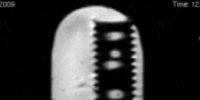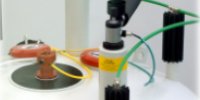
Research
The Centre for Hyperpolarisation in Magnetic Resonance brings together expertise in inorganic chemistry, catalysis, organic synthesis, physical chemistry, biochemistry and medical imaging to develop hyperpolarisation techniques. These techniquies include parahydrogen induced polarisation (PHIP), signal amplification by reversible exchange (SABRE) and dynamic nuclear polarisation (DNP). CHyM works closely with the Department of Biology and the Hull York Medical School on the clinical applications of these technologies and also with the Department of Chemistry and the Department of Psychology.
PHIP
The PHIP technique incorporates parahydrogen into molecules in order to hyperpolarise them. This enables the observation of reaction intermediates in catalytic cycles and provides new insight into mechanisms.
SABRE
The SABRE technique polarises molecules by bringing parahydrogen, a catalyst, and the target substrate into temporary contact. The polarisation transfers from hydrogen, through the catalyst to the substrate. Once transfer is complete, the assembly falls apart and the process repeats giving a solution of hyperpolarised substrate.
DNP
DNP creates polarised compounds through the influence of a radical-containing species at extremely low temperature. At 1.4 K (-271.6 °C), the radical hyperpolarises the target compound which, after a rapid dissolution step, can be studied in NMR or MRI measurements.



